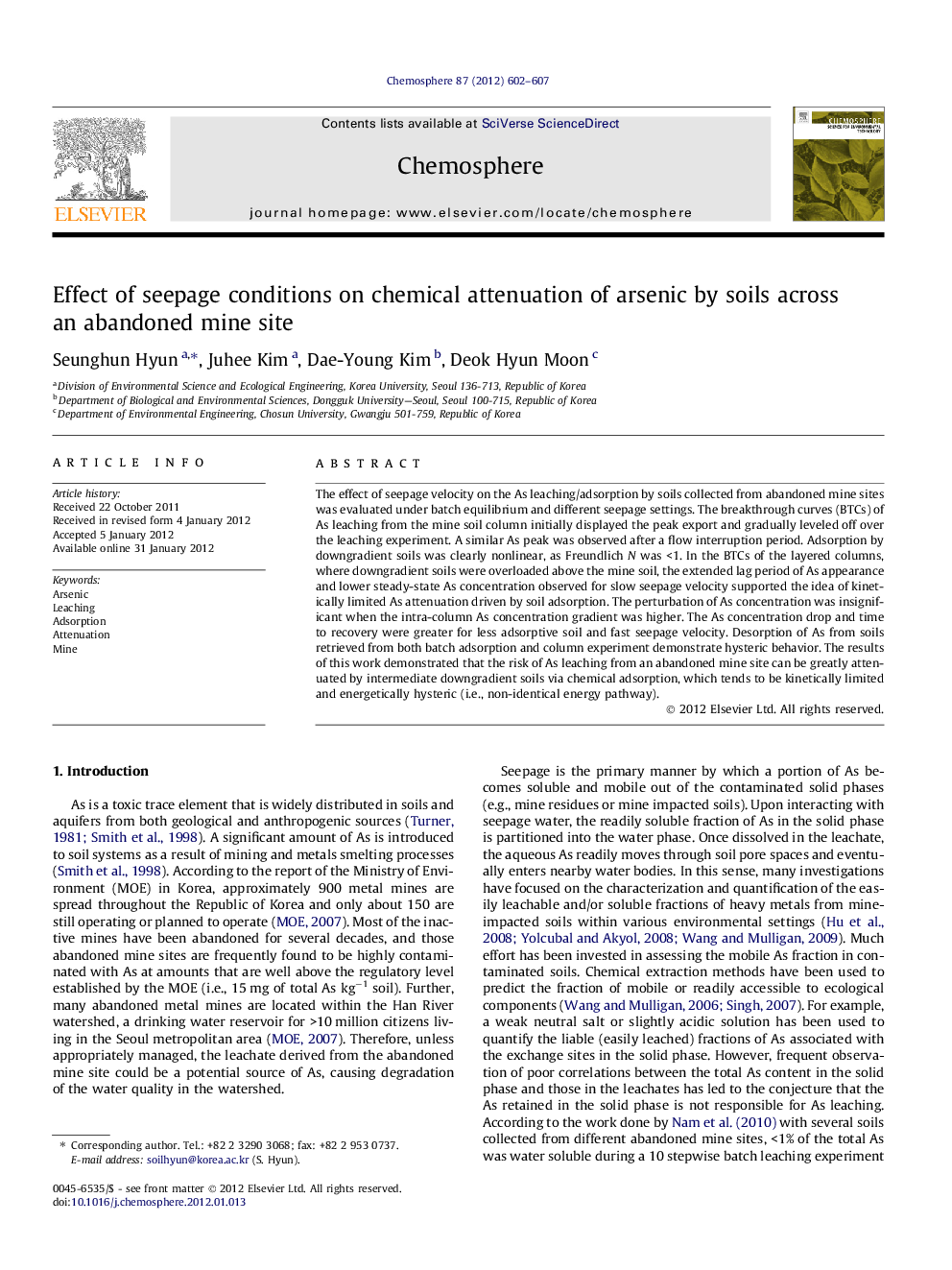| Article ID | Journal | Published Year | Pages | File Type |
|---|---|---|---|---|
| 4409752 | Chemosphere | 2012 | 6 Pages |
The effect of seepage velocity on the As leaching/adsorption by soils collected from abandoned mine sites was evaluated under batch equilibrium and different seepage settings. The breakthrough curves (BTCs) of As leaching from the mine soil column initially displayed the peak export and gradually leveled off over the leaching experiment. A similar As peak was observed after a flow interruption period. Adsorption by downgradient soils was clearly nonlinear, as Freundlich N was <1. In the BTCs of the layered columns, where downgradient soils were overloaded above the mine soil, the extended lag period of As appearance and lower steady-state As concentration observed for slow seepage velocity supported the idea of kinetically limited As attenuation driven by soil adsorption. The perturbation of As concentration was insignificant when the intra-column As concentration gradient was higher. The As concentration drop and time to recovery were greater for less adsorptive soil and fast seepage velocity. Desorption of As from soils retrieved from both batch adsorption and column experiment demonstrate hysteric behavior. The results of this work demonstrated that the risk of As leaching from an abandoned mine site can be greatly attenuated by intermediate downgradient soils via chemical adsorption, which tends to be kinetically limited and energetically hysteric (i.e., non-identical energy pathway).
► Arsenic leaching from mine soils is kinetically limited. ► Arsenic mobility can be greatly attenuated by downgradient soils. ► The attenuation was found kinetically limited and energetically hysteric.
